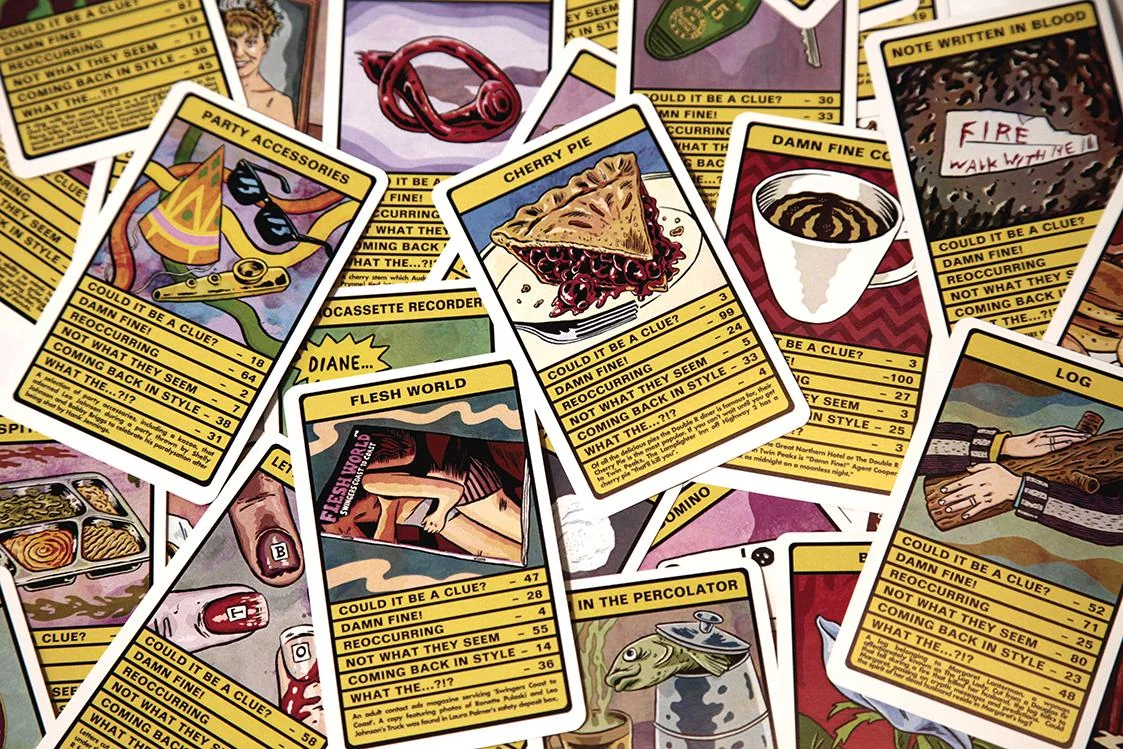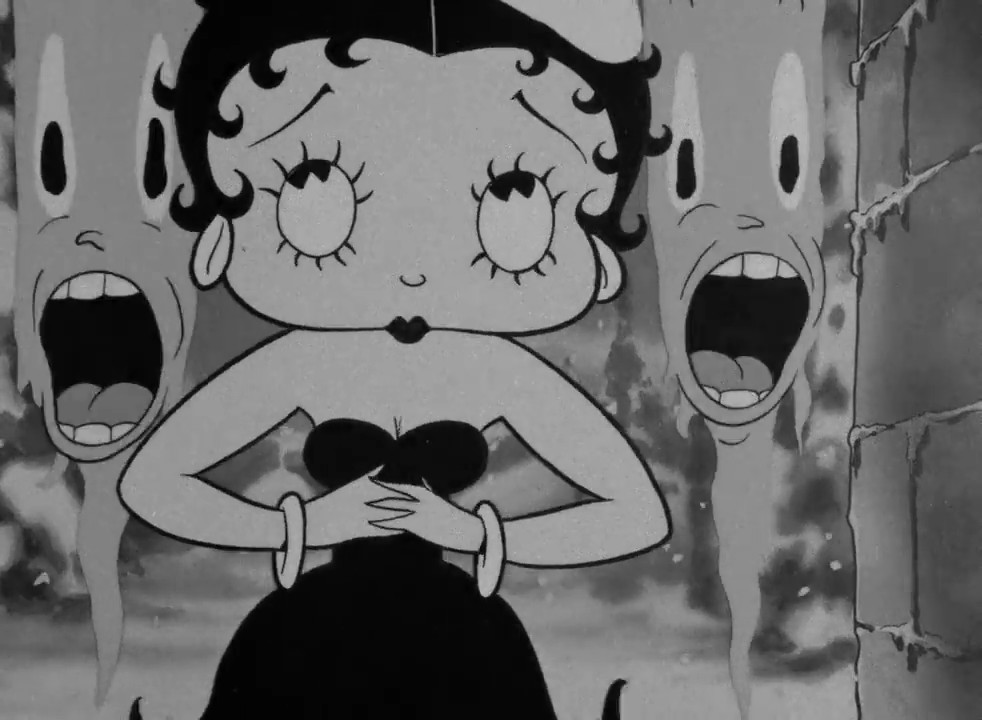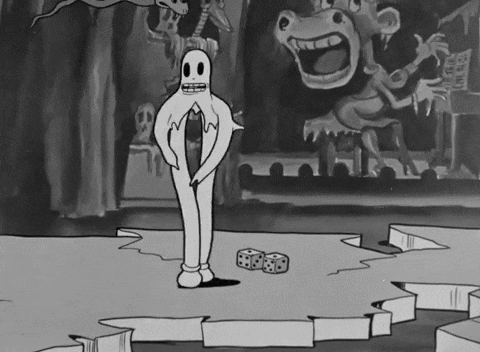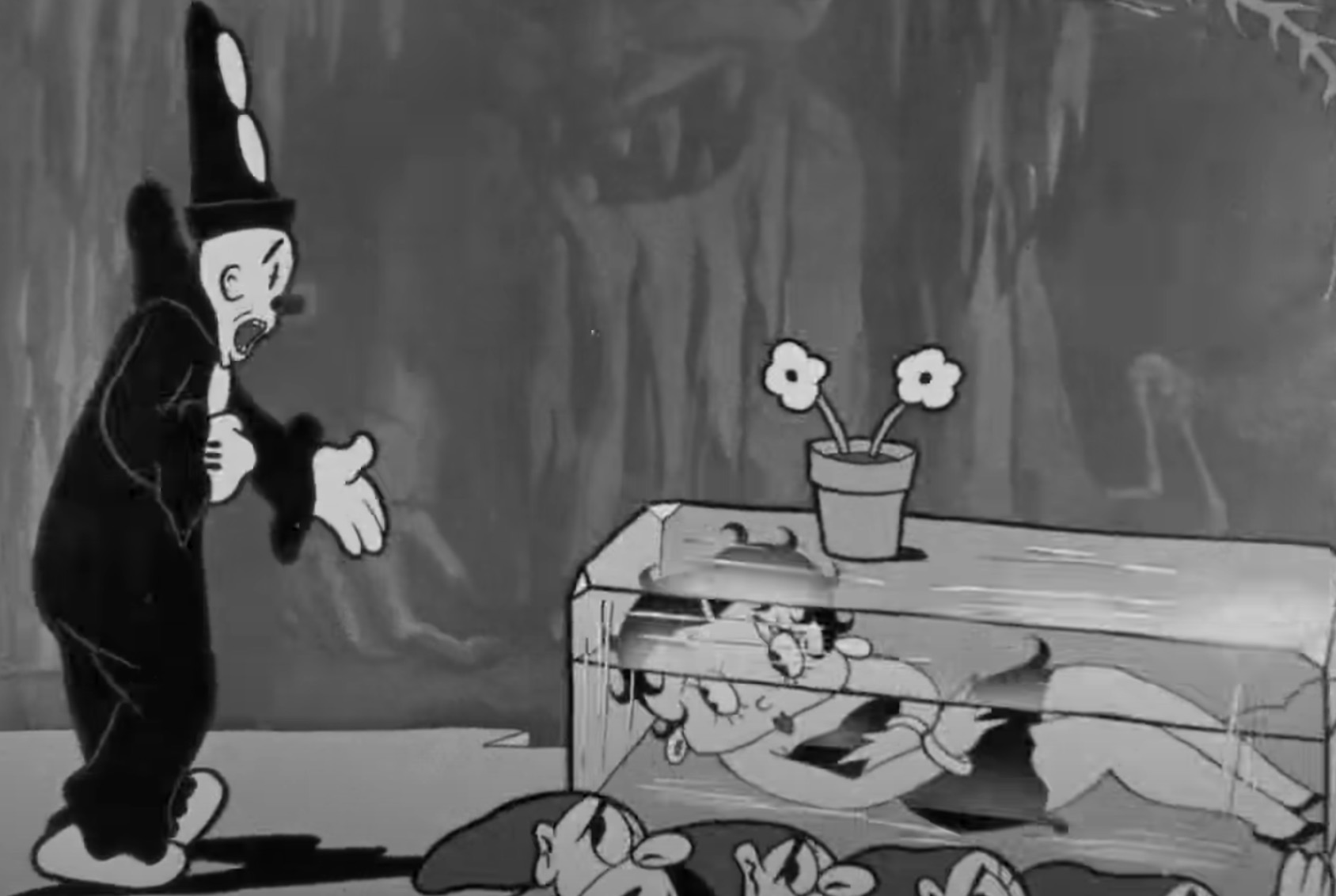IN THE MYSTERY CAVE (3)
By:
June 17, 2023
Third in a three-part series, by HILOBROW friend Colin Dickey, on Betty Boop’s Snow-White, Twin Peaks, and the erotic life of things.

Who killed Twin Peaks? The tension that drove the show’s production and behind-the-scenes drama, and which ultimately made the original series unsustainable, was a confusion about what it was about.
For the studio executives and the general public, it was a murder mystery, driven by the central question: “Who killed Laura Palmer?” When the series strayed from that central premise, or withheld answers for too long, people became impatient. But Frost and Lynch had always imagined that question as something only slightly more than a MacGuffin: something to get the audience hooked and intrigued about this world, which could then open up to a whole host of other questions, narratives, and concerns.
The pitch of the show followed Poe’s claim, that “the death of a beautiful woman is, unquestionably, the most poetical topic in the world.” Both the studio and the mass public wanted nothing but this singular, unified effect whereby the entire series was structured around this one dead beautiful woman. Meanwhile, the story that Lynch and Frost wanted to tell was a heterogeneous one, where repressed libidinal energy infected the world of things, which then spilled out into the lives of the living in ways both fantastical and horrific. This narrative tension between a central through line and endless digressions and associations, proved more or less untenable in network television, leading to the show’s rapid decline after the murder had been solved and its eventual cancellation at the end of season two.

But in an eight-minute film like Fleischer’s Snow-White, this tension can be played out more productively — further, Snow-White offers a more benign version of this world of things that have come alive, a world brimming with erotic desire.
This definition of the erotic in Snow-White has nothing to do with the sexualization of Betty Boop; the erotic is not about her exaggerated figure, her voice, or dress. (For that matter: while Betty Boop was an early, pre-Code sex symbol, in Snow-White she is alternately pathetic and, at times, ridiculous, pratfalling regularly.) The erotic is quite the opposite — it happens at the moment when a certain kind of libidinal energy is no longer restricted to bodies, but begins to infect the world of things.
In this sense the erotic is entirely opposed to the pornographic, which, fundamentally, consists in sexualizing bodies. Costumes and objects may be used, but their singular purpose is to direct focus onto the bodies in question themselves. Pornography follows the logic of Poe’s philosophy of composition: it is arranged around a unity of effect, which is to get you off. If it often feels mostly mechanical and rote, because it has a single purpose.
As Roland Barthes explains, “the erotic is a pornographic that has been disturbed, fissured.” In his final book, Camera Lucida, he develops this line of thought with regards to photography. “Nothing more homogenous than a pornographic photograph,” he writes. “It is always a naïve photograph, without intention and without calculation. Like a shop window which shows only one illuminated piece of jewelry, it is completely constituted by the presentation of only one thing: sex: no secondary, untimely object ever manages to half conceal, delay, or distract.” In contrast to the pornographic, the erotic, Barthes suggests, is that which “pricks” the viewer in some fashion — as he explains by discussing a Mappelthorpe photograph: “Mappelthorpe shifts his close-ups of genitalia from the pornographic to the erotic by photographing the fabric of underwear at very close range: the photograph is no longer unary, since I am interested in the texture of the material.”
Pornography, like the dream sequence, is a brief interruption from the mundane world: Its goal is to empty your head of sexual thoughts so you can go back to having a productive day. Most — but by no means all — pornography simply replicates the male gaze, but the more important point is that it interrupts the world without seeking to trouble or disturb it. Porn, seen in this light, will always — regardless of its content, whether misogynist or not — be conservative, bordering on reactionary, since its goal is to provide an outlet for otherwise productive people to get off so they can get back to work. To say that our current world is pornographic is to say that culture is invested simultaneously in sexualizing all bodies while also diminishing sex itself to its briefest iteration, so that sexual desire can drive capitalism while sex itself will minimally disrupt it.
In contrast to this, the erotic gaze, by turning away from bodies towards the world of things, seeks to upend and disrupt the world instead. Embracing the erotic does not necessarily have to involve any form of sexual activity. The overlap, for example, between the erotic and abstinent Catholic saints is just one of many ways in which one can embrace the erotic without participating in any specific kind of sexual behavior. The erotic pushes the world to its limit, and if it holds back in the final gasp, it’s only to preserve the possibility of some future destruction. As Georges Bataille wrote in his definition of eroticism, it is “the assenting of life up to the point of death.” The erotic involves opening up oneself to the possibility of one’s own death, the void of one’s own annihilation.
But which death, and which life? Disney’s version prioritizes the seemingly dead Snow White in her glass coffin, making it the central aesthetic and narrative focal point of the film. It’s a movie that sexualizes the idea of a dead young woman and affirms Poe’s comment about that most poetical topic in the world.

In the Fleischer rendition, by contrast, the focus is not on Betty in her coffin but on the rotoscoped ghost of Cab Calloway and the various phantasms that swim past him and Betty’s corpse. Soon enough, she disappears from the screen altogether, and we’re left with Calloway’s lament and the skeletal figures in the background who are enacting his funeral reverie.
The song Calloway sings, “St. James Infirmary,” after all, is a song that starts with a dead woman but quickly loses track of her. The first verse tells of a man learning that his lover is dead and visiting her corpse, but almost immediately he wails, “Let her go, let her go god bless her, wherever she may be, she may search this wild world over, but she’ll never find another man like me.” For the rest of the song, the singer describes his visions of his own funeral, forgetting the woman entirely.
This forgetting of the dead beloved in “St. James Infirmary” parallels the passage through the Mystery Cave where Betty’s sexualized dead body is forgotten as well. Contra Disney and Poe, the poetic trope of the beautiful woman is at best a mere trigger to a larger theme, where the world becomes alive with the thought of death.

In this version, Betty need not even be dead. As the Dwarfs carry her through the cave, Betty can’t quite keep her eyes closed; over and over she sneaks a peak at Koko while he begins to sing, before being whisked away offscreen as Calloway’s performance takes over. The viewer is wholly focused on Koko, the rotoscoped Calloway, and these other, subtler actions — while intentionally animated — are easy to miss. It’s one of the hallmarks of a film like Snow-White: rather than a single, central image to focus on, where the animation is dedicated to keeping you aware of that, there is instead a frenetic amount of random noise, visual gags, and other action happening, much of it not at all designed to be seen or recognized by viewers.
Unable to play her part as the dead beauty, Betty keeps an eye on the proceedings all around her, voyeuristically participating in her own mock funeral. The libidinal energy of the Mystery Cave is no longer restricted to Betty’s body; instead, it spreads out in every direction, and infects and animates everything it touches, including Betty herself. Unlike Minnie the Moocher, Snow-White is not a story of a young girl leaving the safety of her suburban home to be tempted by sexually aggressive ghosts and ultimately retreating to her safe home. For if Betty is tempted by anything down here, it is death itself — and with it, the erotic possibilities of life.
IN THE MYSTERY CAVE: PART 1 | PART 2 | PART 3.
MORE COLIN DICKEY at HILOBROW: KAIROS (Hermenautic Tarot series) | ANIMAL MAGNETISM (cross-posted series) | WIDESPREAD PANIC (Grok My Enthusiasm series) | ACÉPHALE (#Squadgoals series).
